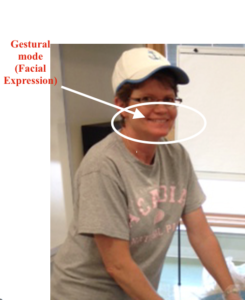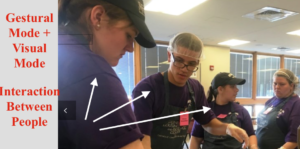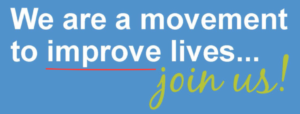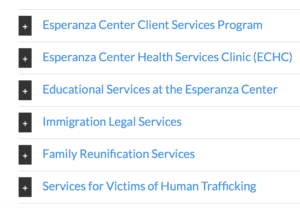Below is a video that reveal the struggles that individuals face after deportation.
Below is a video that reveal the struggles that individuals face after deportation.
In the article Local People’s Attitudes Toward Young Zimbabwean Immigrants, the writers discuss the negative attitudes the citizens of Musina have against the young Zimbabwean immigrants. Zimbabwe is a country in South Africa. Musina is a developed city located on the border of Zimbabwe. Musina locals feel that the immigrants compete with locals for business, housing, and health care. The locals have also emphasized that immigrants are more preferred for jobs than locals because immigrants contribute labor that is cheaper. In April 2015 the South African Zulu King made a public state regarding anti-foreigners which resulted in the locals attacking and the disposal of immigrants belongings.
Researchers believe the negative attitude that surrounds immigrants is an outcome of culture, language, nationality, and personal contact barriers. In addition, another influence is the size of the population. Zimbabwe’s large population makes locals of Musina fear that the immigrants will take all their resources.
In the article, the writers conducted a study in Musina to get primary evidence on how the locals feel about Zimbabwe’s youth immigrants. In the study, they found 43.7% of locals feel they display a positive attitude toward immigrants. These individuals believe that Zimbabwean youth are family, and contribute to economic growth by working occupations that not preferred by the locals. In addition, locals stated that youth Zimbabweans increase business sales by purchasing goods in bulk Musina and reselling the goods in Zimbabwe. However, 56.3% of the locals feel youth Zimbabwean are problematic when the youth take high paying jobs. Also, the locals indicated when Zimbabwean immigrants are in desperate need of money they engage in criminal activities.
The writers concluded the study by recommending that the Musina locals and young Zimbabweans must be taught entrepreneurial skills, therefore, they can create jobs for others and don’t have to compete over scare job opportunities.
R., Chinyakata, et al. “Local People’s Attitudes Towards Young Zimbabwean Immigrants: The Case of Musina, South Africa.” Gender & Behaviour, vol. 16, no. 3, Dec. 2018, pp. 11908–11917. EBSCOhost, search.ebscohost.com/login.aspx?direct=true&db=a9h&AN=134055081&site=eds-live&scope=site.
In the article There Are No Jobs Americans Won’t Do the writers suggested that there are no occupations in the United States that are all foreign-born. Most immigrants work in construction, cleaning, maintenance, food service, garment manufacturing, and agricultural occupations. The writers found that these occupations consist of both legal and illegal immigrants and native-born citizens. Americans have a notion that Immigrants do jobs that most Americans won’t do such as farm work, however, the writers found that only 4 percent of illegal immigrants and 2 percent of all immigrants do agricultural work.
The writers also conducted an analysis of occupations that are thought to be dominated by immigrants but are actually employing significantly more native-born citizens. The data conveys that 51 percent of native-born citizens are maids and housekeepers, 54 percent of native-born citizens are taxi drivers or chauffeurs, 64 percent of native-born citizens are butchers and meat processors, 65 percent of native-born citizens are construction laborers, and 73 percent of native-born citizens are janitors. The writers believe that high immigrant occupations are low wage jobs that require no formal education. However, not all immigrants are in industries that are low skilled. Thirty-eight percent of immigrants are software engineers, 28 percent are physicians and 7 percent are lawyers.
This article demonstrates that immigrants are being employed in American, but a higher percentage of native-born citizens are dominating the jobs in America. There are no jobs in the United States where occupation is all immigrants. In addition, there are 24 occupations out of 474 in which illegal immigrant are among 15% of workers, whereas, 5.7% of native-born citizens are in high illegal immigrant occupations.
Camarota, Steven, et al. “There Are No Jobs Americans Won’t Do.” CIS.org, 26 Aug. 2018, cis.org/Report/There-Are-No-Jobs-Americans-Wont-Do.
After the inauguration of Donald Trump, many citizens believed that he will be capable of decreasing the unemployment rate. In the article, Without Immigrants, Trump’s Jobs Numbers Would be Much, Much Worse, writer Philip Bump focused on comparing Trump’s actions to economic recovery to Obama’s term. Bump began his article by mentioning that Obama came into the office when employment was suffering. When Obama took office, the unemployment rate for the United States was 7.8 percent. The peak unemployment rate when Obama was in office was 10 percent. During Trump’s term in office, the peak unemployment rate was 4.7 percent.
When this information was presented to Trump, Trump tweeted More people are working today in the United States, 158,000,000 than at any time in our Country’s history. That is a big deal.
The Bureau of Labor Statistics’ confirmed that the figure was actually under 157,000,000. However, the all-time high for employment did indeed occur in November 2018. Economist believe that the labor force increased as a result of an increase in population. Bump found from July 2016 to July 2018 the United States added 4 million people and 4.7 million jobs. Trump failed to acknowledge in his tweet that more than a third of employment went to immigrants. The Bureau of Labor Statistics’ found that 17% of the people working in the United States were born in a foreign country. Researchers found, in 2017 the workforce consisted of 66% of foreign-born people that were able to work compared to 62% of American born citizens. The U.S. Census Bureau found the increase in population from 2010-2018 is a result of immigration.
Bump, Philip. “Without Immigrants, Trump’s Jobs Numbers Would Be Much, Much Worse.” The Washington Post, WP Company, 11 Mar. 2019, www.washingtonpost.com/politics/2019/03/11/without-immigrants-trumps-jobs-numbers-would-be-much-much-worse/?utm_term=.415e91b10e7a.
In chapter 31 Ifemelu is at a dinner party in Manhattan discussing politics with Blaine’s friends. At the event, a Haitian woman had mentioned that she was eager to have a black man as the president of the United States because she felt he had the power to end racism. Ifemelu’s rebuttal was “The only reason you say that race was not an issue is because you wish it was not. We all wish it was not. But it’s a lie. I came from a country where race was not an issue, I did not think of myself as black and I only became black when I came to America” (Adichie 359).
Ifemelu then emphasized that interracial dating has not improved throughout time because it’s now legal. Ifemelu wanted to convey to Blaine’s friends that there should not have been restrictions on interracial dating at all.
Although Ifemelu was not entitled to speak on another woman’s experience with interracial dating. We are consciously able to see the racial privilege that Curt has, and Ifemelu doesn’t. To demonstrate, Curt made a few phone calls and found Ifemelu a job. Curt threatened an Asian woman to do Ifemelu’s eyebrows. Finally, Curt and Ifemelu went into a restaurant together and the host asked Curt if he was dining alone. With that being said, when or what age did you notice the racial divide in America?
“Chapter 31.” Americanah, by Chimamanda Ngozi Adichie, Anchor Books, A Division of Random House LLC, New York, 2013, pp. 355-369.
On February 27th, author Carlos Hernandez visited the students at Stevenson University. His work consists of publications in poetry, fiction, science fiction and etc. Hernandez is currently getting ready to launch a children’s book titled Sal and Gabi Break the Universe with his contract with Disney. In addition to his work in book publication, Hernandez has also written and designed a video game titled Meriwether.
During our class panel, I enjoyed how authentic and humble Mr. Hernandez was. He began by speaking on his childhood of being a first generation American. In addition, he gave advice on how to overcome writer’s block, self-doubt, and writing in one creative workspace. I appreciated when Mr.Hernandez admitted that it takes him months/ years to write pieces of literature. I could completely sympathize with him when he stated that because I personally cannot write a good quality essay or blog post in one sitting. Overall, I feel Mr.Hernandez is the epitome of how working hard will lead you to success.
For my grant proposal, I would like to host a community farmers market. The objective of this event is to raise money for the refugees at the Esperanza Center. The event will be held in Baltimore MD and will be open for all Maryland residents. The farmers market will consist of:
Local vendors
Live entertainment
Food and Drinks
Moon bounces
Games
The objective of this event is to allow refugees to build relationships with community members and share their stories and talents. The community will raise money for the refugees through payment of entry, payment for food, and donations from local vendors. This event will help fund more assets for the Esperanza Center and expose the community to the lives of refugees.

On February 13th, 2019 Stevenson University hosted an Entrepreneurship Career Panel. The panelist consisted of John Dinkel of Dinkel Business Development, Chris Daley, founder and principal of Whirlaway LLC, Elizabeth Trimm branch manager for Enterprise Rent-A-Car, Andrew Murphy, partner and owner of Flying Frog Publishing, Andy Brown, founder and CEO of Eat Pizza, and Garrett Pfeiffer, manager of Maryland Brand Management. Throughout the event, the panelist discussed their strategy of creating a business, how to manage a healthy work-life balance, and guidance on successfully establishing a brand. One comment that resonated with me was one must have tough skin to start a business. Andy Brown mentioned that he was called an idiot by many of his peers when he first began selling frozen pizza. Hence, I will need to be my biggest supporter when no one else sees my vision. In addition, I felt it was helpful learning why each entrepreneur started their business. John Dinkel mentioned that he started his business as an outcome of his sister in law passing away suddenly. When this occurred he questioned if he was living a life of self-fulfillment and joy. As a result, he took the necessary steps to quit his 9 to 5 job to start a life he felt gave him a purpose.
The subject matter of the entrepreneurship panel was very relevant to the material we learn in digital publishing. With the enhancement of technology, one can create a business and establish a brand through sites like Instagram, Facebook, and Youtube. At the end of the panel, Andy Brown revealed to me that it is essential to learn the basic fundamentals of business. To clarify, I need to learn accounting and marketing so I won’t have to become dependent on an accountant or brand marketer. In the same token, I must utilize the skills that I learn from digital publishing when it comes to building a website or producing online content because no one will be able to perfectly capture the vision I want. This event specifically connected to my career because my goal is to become an entrepreneur. Currently, I major in Business Administration with a minor in Fashion Merchandising. I feel, learning about entrepreneurship in class does not hold the same value as talking to a group of entrepreneurs. They disclosed personal failures they endured as well as the knowledge they wished they knew prior to starting a business. I believe, the panelist helped reassure me that business is the path I want to pursue. In the words of Andrew Murphy, I am willing to HUSTLE to be successful!
The Esperanza Center is a nonprofit organization located in Baltimore, Maryland. The organization serves to improve the lives of immigrants by offering educational, legal, and compassionate services. Below we will review a rhetorical analysis that describes the audience, purpose, context, author, and genre pertaining to the Esperanza Center.
The Esperanza center primary target audience are individuals who value giving back to the community by donating money or volunteering. The writer appeals to the values of the primary audience by using a slideshow of visual modes on the volunteer page. In the images, a gestural mode is displayed through facial expressions and interactions between people to emphasize that “Serving people of all ages, we can help you find your place to make a difference”(“Esperanza Center”, n.d.)


The secondary audience, are individuals who are seeking to find immediate help, members of Catholic communities in Maryland, someone looking for employment, and competitors interested in developing a nonprofit. The values the secondary audience are diverse. Some individuals desire a company that will help in career development, where others are looking for a specific program for a loved one. The writer appeals to the secondary audience through spatial mode. Readers can easily access the information they are looking for through the organization of paragraphs, and Z shaped page layout.
The overall intention of the Catholic charities website is to improve the lives of the community. On the display page of the website, the writers wrote in big white text “We are a movement to improve lives, join us”(“Esperanza Center,” n.d.). Executive director, Bill Mccarthy wrote, the organization aspires to “touch the lives of hundreds of thousands of individuals and families each year”(“About Us,” n.d.). With that being said, the purpose of the Esperanza center is to specifically cater to immigrant families. The center assists in offering educational services, health services, legal services, reunification services, and human trafficking services. The secondary intention of this website is to publicize the positive impact Catholic churches have on the community. This is shown on the homepage through video media, news, stories, and testimonials.


The medium is executed through a website. The writer chose a website because the organization is able to communicate their services and mission to a large demographic of people at a low cost. In addition, many organizations feel that individuals prefer to access information through the internet rather than a newspaper or brochure because technology is easily accessible. Readers are able to interact with this text via tablet, phone, desktop, or laptop. Esperanza’s website is multimodal. The writer communicates information through various modes such as words, pictures, videos, bullet points, colors, shapes, and paragraph spacing. One does not have to sit down to understand the message the writer is trying to convey. The physical arrangement of the website is organized for readers to obtain the information they need by reading the large fonts and clicking the headings.


I believe the writer or writers of this website are the employees that handle the media and content creation for the organization. Bill McCarthy, who is the executive director for the organization is the only staff member whose name is attached to the content on the website. I do not believe he is solely responsible for all the media within the website. However, he is responsible for many articles that are written on the company’s blog. The anonymous writer or writers have established credibility in the website by highlighting the competing organizations that recognized them for their impact of the community. The writer includes data such as annual reports for donors to view where assets are being used in the organization. Also, the media on the website are pictures of volunteers working at events, and the videos contain interviews by staff members that currently work in the organization.
The genre of this website is a nonprofit organization. Esperanza center’s website spatial mode is arranged in a template format thats similar to other nonprofits websites such as the National Alliance to End Homelessness. Both websites contain the standard donate page, about us page, events page, news page, contact information, search engine, and the organization’s name in the top header. Both websites feature compelling images that bring awareness to the cause. A more specific genre that demonstrates the website’s genre is a message board/ weblog/ directory styled website. The home page is one message for the masses. The weblog features articles for readers to interact with the organization. The directory allows readers to examine information with ease.


References
“Esperanza Center.” Catholic Charities of Baltimore, www.catholiccharities-md.org/services/esperanza-center/.
MCcarthy , Bill. “About Us.” Catholic Charities of Baltimore, www.catholiccharities-md.org/about-us/.